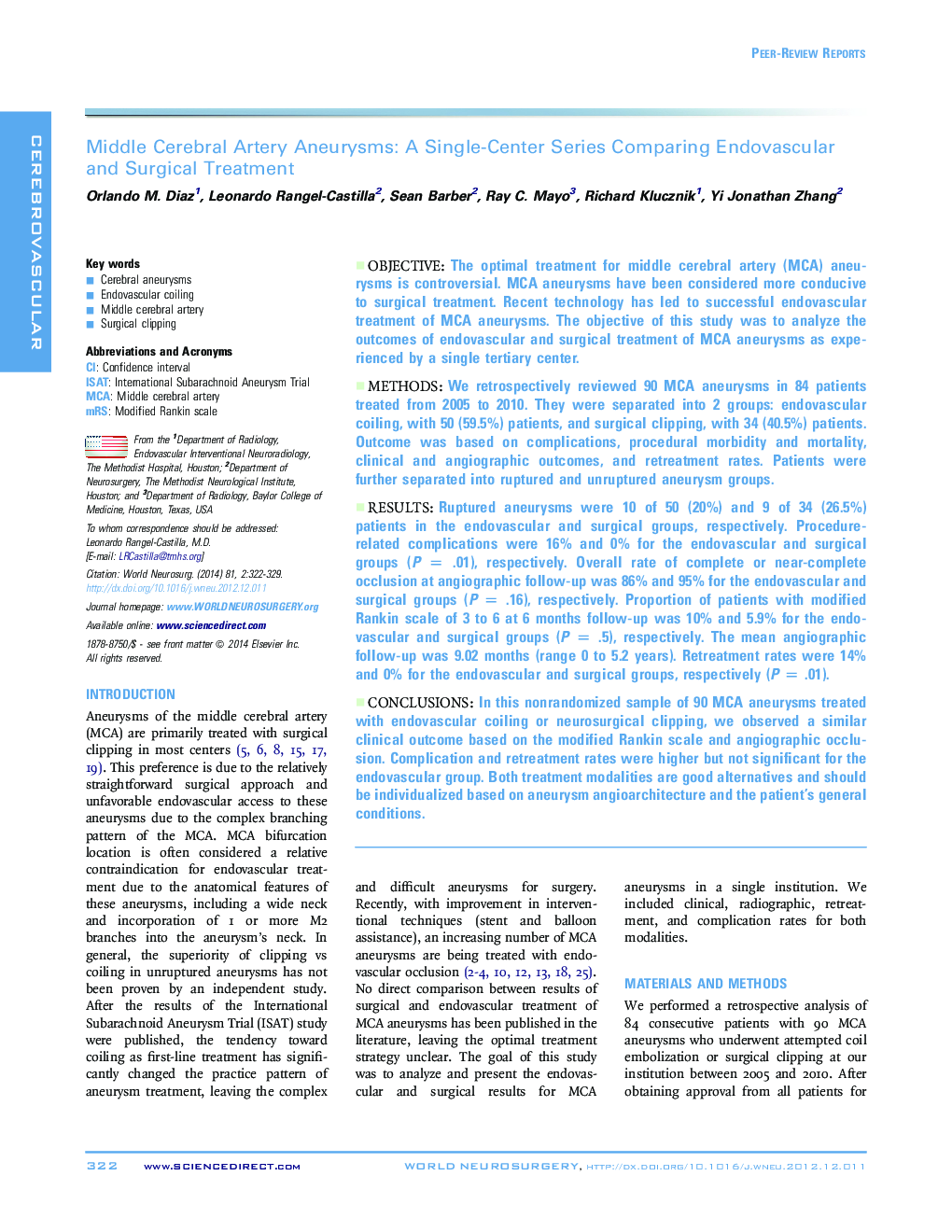| کد مقاله | کد نشریه | سال انتشار | مقاله انگلیسی | نسخه تمام متن |
|---|---|---|---|---|
| 3095723 | 1190916 | 2014 | 8 صفحه PDF | دانلود رایگان |

ObjectiveThe optimal treatment for middle cerebral artery (MCA) aneurysms is controversial. MCA aneurysms have been considered more conducive to surgical treatment. Recent technology has led to successful endovascular treatment of MCA aneurysms. The objective of this study was to analyze the outcomes of endovascular and surgical treatment of MCA aneurysms as experienced by a single tertiary center.MethodsWe retrospectively reviewed 90 MCA aneurysms in 84 patients treated from 2005 to 2010. They were separated into 2 groups: endovascular coiling, with 50 (59.5%) patients, and surgical clipping, with 34 (40.5%) patients. Outcome was based on complications, procedural morbidity and mortality, clinical and angiographic outcomes, and retreatment rates. Patients were further separated into ruptured and unruptured aneurysm groups.ResultsRuptured aneurysms were 10 of 50 (20%) and 9 of 34 (26.5%) patients in the endovascular and surgical groups, respectively. Procedure-related complications were 16% and 0% for the endovascular and surgical groups (P = .01), respectively. Overall rate of complete or near-complete occlusion at angiographic follow-up was 86% and 95% for the endovascular and surgical groups (P = .16), respectively. Proportion of patients with modified Rankin scale of 3 to 6 at 6 months follow-up was 10% and 5.9% for the endovascular and surgical groups (P = .5), respectively. The mean angiographic follow-up was 9.02 months (range 0 to 5.2 years). Retreatment rates were 14% and 0% for the endovascular and surgical groups, respectively (P = .01).ConclusionsIn this nonrandomized sample of 90 MCA aneurysms treated with endovascular coiling or neurosurgical clipping, we observed a similar clinical outcome based on the modified Rankin scale and angiographic occlusion. Complication and retreatment rates were higher but not significant for the endovascular group. Both treatment modalities are good alternatives and should be individualized based on aneurysm angioarchitecture and the patient’s general conditions.
Journal: World Neurosurgery - Volume 81, Issue 2, February 2014, Pages 322–329